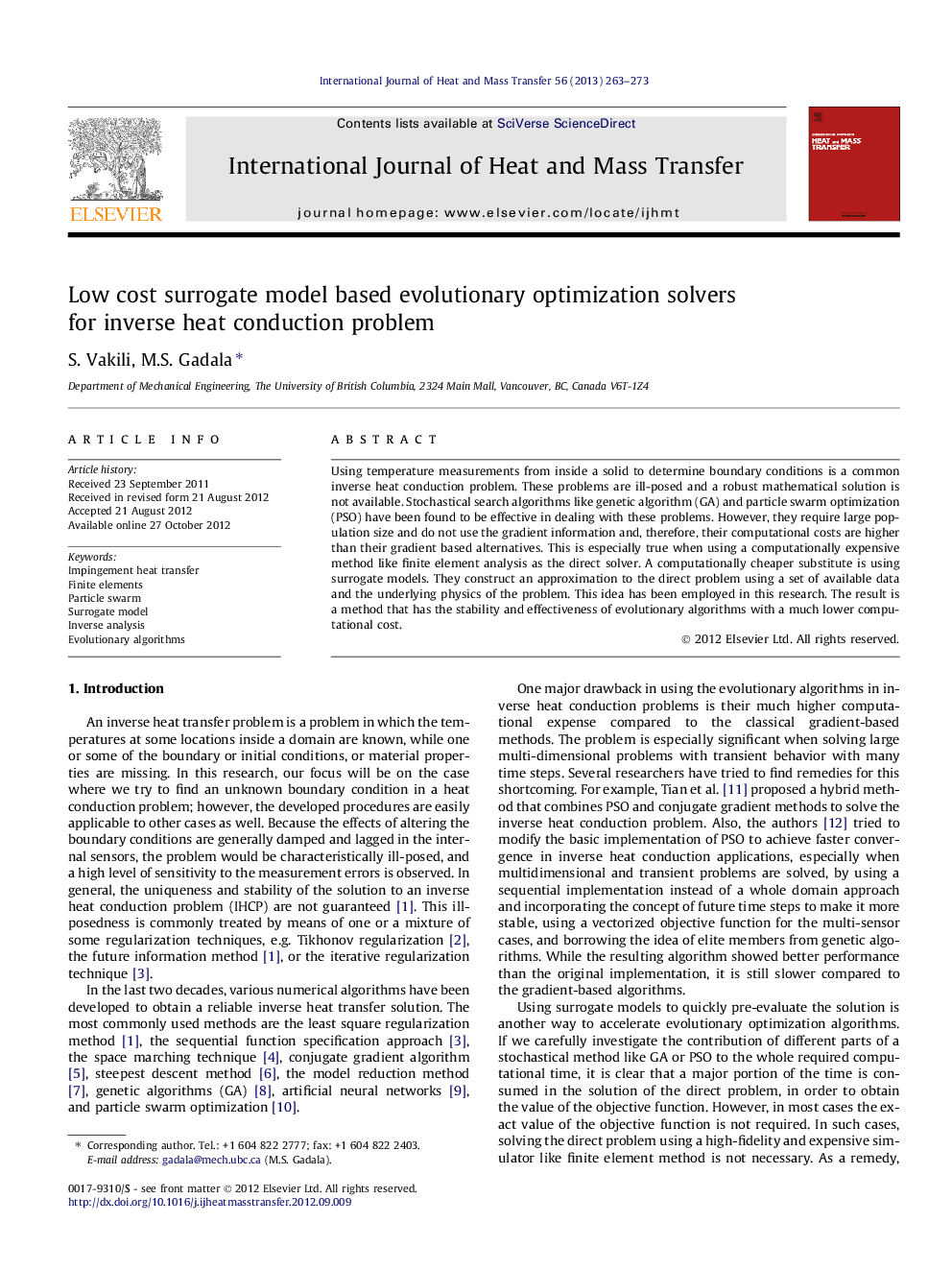| Article ID | Journal | Published Year | Pages | File Type |
|---|---|---|---|---|
| 658785 | International Journal of Heat and Mass Transfer | 2013 | 11 Pages |
Abstract
Using temperature measurements from inside a solid to determine boundary conditions is a common inverse heat conduction problem. These problems are ill-posed and a robust mathematical solution is not available. Stochastical search algorithms like genetic algorithm (GA) and particle swarm optimization (PSO) have been found to be effective in dealing with these problems. However, they require large population size and do not use the gradient information and, therefore, their computational costs are higher than their gradient based alternatives. This is especially true when using a computationally expensive method like finite element analysis as the direct solver. A computationally cheaper substitute is using surrogate models. They construct an approximation to the direct problem using a set of available data and the underlying physics of the problem. This idea has been employed in this research. The result is a method that has the stability and effectiveness of evolutionary algorithms with a much lower computational cost.
Keywords
Related Topics
Physical Sciences and Engineering
Chemical Engineering
Fluid Flow and Transfer Processes
Authors
S. Vakili, M.S. Gadala,
